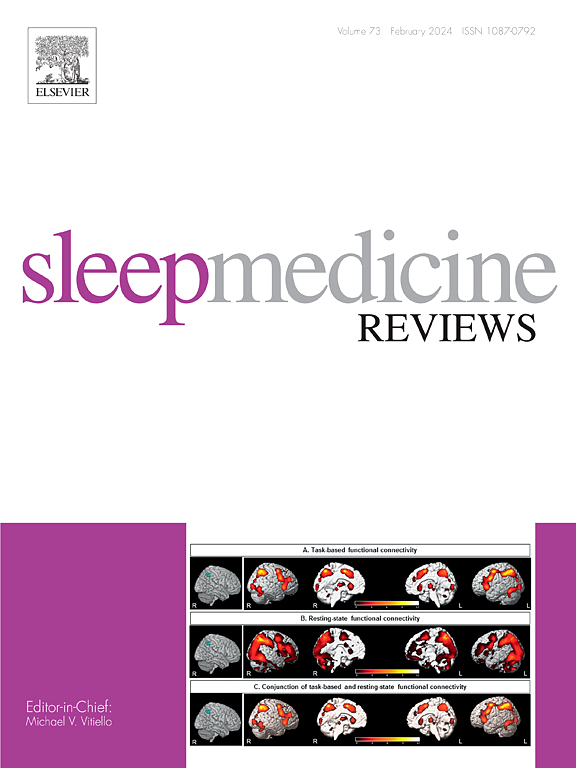双过程模型:释放听觉刺激在睡眠中调节大脑振荡的潜力。
IF 9.7
1区 医学
Q1 CLINICAL NEUROLOGY
引用次数: 0
摘要
慢波和纺锤波是非快速眼动(NREM)睡眠的关键电生理标志,被认为在维持大脑功能方面起着因果作用。虽然它们与这些功能的关联已经被认识了几十年,但潜在的机制仍然难以捉摸。新出现的证据表明,它们的功能作用不仅取决于个体的振荡,还取决于时空神经元同步的相互作用。最近通过听觉输入调节NREM睡眠振荡的研究已经证明了直接的行为影响,为精神和神经疾病提供了新的诊断和治疗工具。然而,由于对神经元机制的不完全理解,临床翻译仍然有限。在此,我们提出了NREM睡眠期间听觉刺激的新概念框架,概述了关键刺激参数如何影响特定振荡下网络活动的时空协调。这一框架为解释听觉刺激的影响、对神经元机制提出假设以及确定哪些同步过程是特定功能的目标提供了基础。这种基本的理解是建立NREM睡眠振荡的不同同步过程在驱动不同脑功能中的因果作用的先决条件-这是在NREM睡眠期间有效应用和临床翻译脑刺激技术的关键一步,而不是听觉刺激。本文章由计算机程序翻译,如有差异,请以英文原文为准。
The dual-process model: Unlocking the potential of auditory stimulation to modulate brain oscillations during sleep
Slow waves and spindles, key electrophysiological markers of non-rapid eye movement (NREM) sleep, are thought to play a causal role in sustaining brain functions. While their association with these functions has been recognized for decades, the underlying mechanisms remain elusive. Emerging evidence suggests that their functional role is defined not only by individual oscillations but also by the interplay of spatiotemporal neuronal synchronization. Recent studies modulating NREM sleep oscillations through auditory input have demonstrated direct behavioral effects, enabling new diagnostic and therapeutic tools for psychiatric and neurological disorders. However, clinical translation remains limited due to an incomplete understanding of the neuronal mechanisms. Here, we propose a new conceptual framework for auditory stimulation during NREM sleep, outlining how key stimulation parameters influence the spatiotemporal coordination of network activities underlying specific oscillations. This framework provides a foundation for interpreting the effects of auditory stimulation, formulating hypotheses on neuronal mechanisms, and identifying which synchronization processes to target for specific functions. Such foundational understanding is a prerequisite for establishing the causal role of distinct synchronization processes of NREM sleep oscillations in driving diverse brain functions - a critical step toward effectively applying and clinically translating brain stimulation techniques beyond auditory stimulation during NREM sleep.
求助全文
通过发布文献求助,成功后即可免费获取论文全文。
去求助
来源期刊

Sleep Medicine Reviews
医学-临床神经学
CiteScore
20.10
自引率
3.80%
发文量
107
期刊介绍:
Sleep Medicine Reviews offers global coverage of sleep disorders, exploring their origins, diagnosis, treatment, and implications for related conditions at both individual and public health levels.
Articles comprehensively review clinical information from peer-reviewed journals across various disciplines in sleep medicine, encompassing pulmonology, psychiatry, psychology, physiology, otolaryngology, pediatrics, geriatrics, cardiology, dentistry, nursing, neurology, and general medicine.
The journal features narrative reviews, systematic reviews, and editorials addressing areas of controversy, debate, and future research within the field.
 求助内容:
求助内容: 应助结果提醒方式:
应助结果提醒方式:


